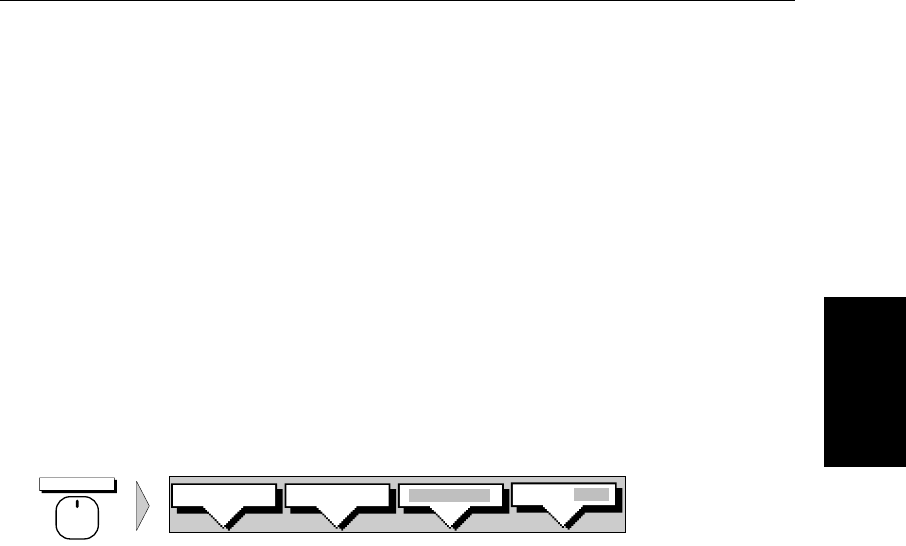
Chapter 4: Integrated Radar Operations 4-3
True and Relative
Motion
The reference used for the Course Up depends on the information available.
The first available in the following list is used:
1. A locked heading (i.e. the heading being used by an autopilot) over a
SeaTalk connection
2. Theheading at the time Course Up was selected
If 1. is in use and a new course (locked heading) is selected, the picture
automatically rotates to the new Course Up.
If 2. is in use, press the HDG MODE soft key then COURSE UP to manually reset
the Course Up to the new course.
Selecting the Heading and Motion Mode
Press the HDG MODE default soft key to obtain the following display, when
heading information is available:
The currently selected modeis highlighted, and is indicatedin the radarstatus
bar (N-UP, C-UP or H-UP and TM or RM).
➤ To change the heading and motion mode:
1. Press the HDG MODE default soft key.
2. Pressthesoftkeycorrespondingtothemodeyourequire.Theradarpicture
changes to the selected mode.
3. Press ENTER to clear the heading mode soft keys. The current orientation
is indicated in the status bar.
Note: True Motion is only available in Course Up and North up mode.
If you re-select Course Up when this is already the current mode, the Course
Up reference is reassessed according to the current data.
Effect on VRM/EBLs
VRM/EBLsdonot moveonthescreen,unlessyouchangetherange,offsetthe
centre, or change the heading mode.
• In Head Up mode, the VRM/EBLs are fixed with respect to the ship’s
heading marker.
• In North Up mode, the VRM/EBLs are fixed with respect to North.
• In Course Up mode, the VRM/EBLs are fixed with respect to the selected
course.
HDG MODE
COURSE UPNORTH UP
D3641-3
HEAD UP
TRUE REL
81186_3.book Page 3 Thursday, August 22, 2002 8:23 AM


















